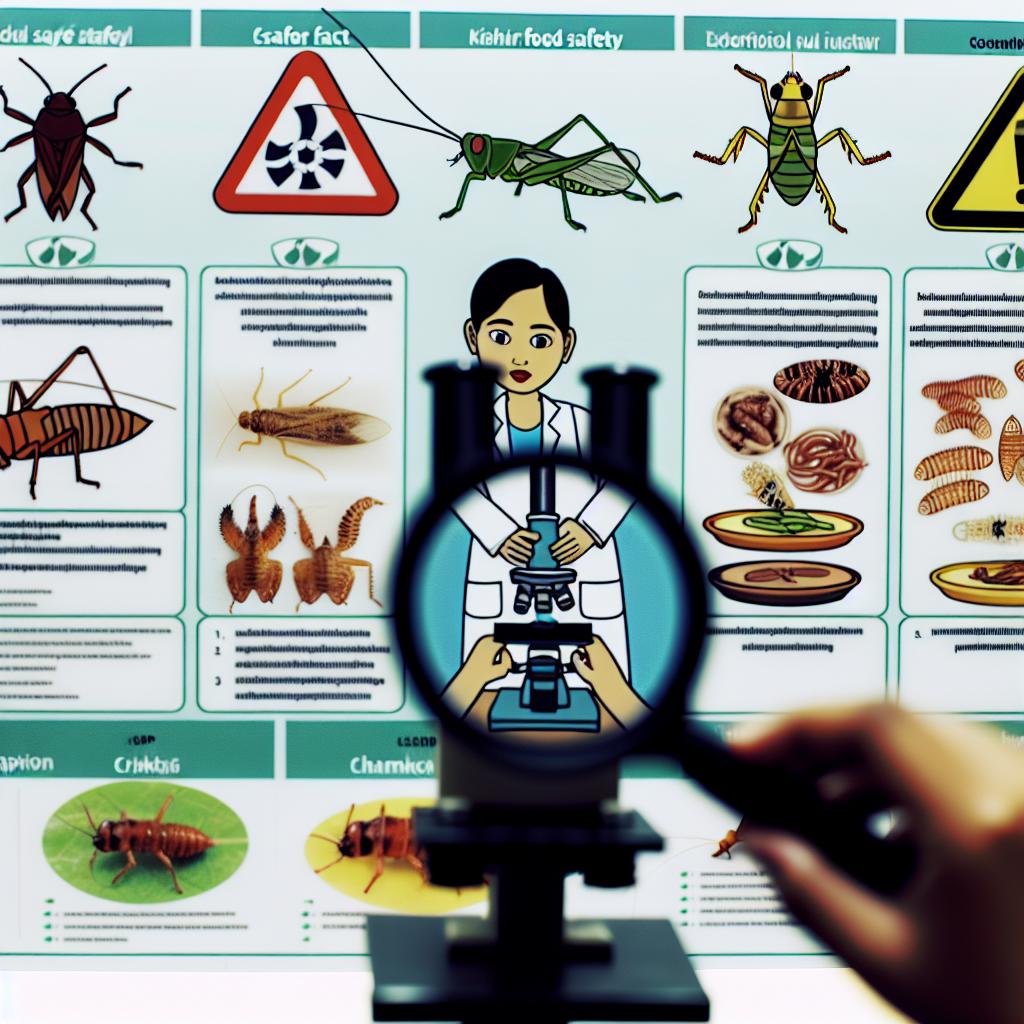Introduction to Insect Consumption
In recent years, the consumption of insects as a potential food source has garnered significant attention. As the global population grows and environmental concerns mount, insects are increasingly seen as a sustainable food alternative. However, as with any food source, ensuring the safety and regulation of eating insects is of utmost importance.
Promising Aspects of Insect Consumption
The growing interest in insect consumption is not just a fleeting trend but is driven by several practical and sustainable considerations. Insects are a rich source of protein, vitamins, and minerals that are comparable to traditional sources like meat and fish. Many species of edible insects provide a significant amount of amino acids, essential fats, and micronutrients. Moreover, insects have a high feed conversion efficiency, meaning they require less food to produce the same amount of protein as other livestock.
As the climate crisis demands more sustainable agricultural practices, the modest environmental footprint of insects presents an attractive alternative. Insects emit significantly fewer greenhouse gases compared to conventional livestock. Additionally, they require less land and water, resources that are becoming increasingly scarce. The use of organic waste as feed further underscores their role in a circular economy, where food production impacts are minimized.
Regulatory Framework
To ensure consumer safety, several countries have begun to implement specific regulations regarding insect consumption. These regulations often focus on the farming, processing, and sale of edible insects. In the European Union, for instance, insects for food are regulated under the Novel Food Regulation. This requires that insects undergo a rigorous safety assessment before they can be marketed. For more details, consider visiting the European Commission’s Food Safety page.
Different countries adopt varying approaches when it comes to the regulation of edible insects. In North America, organizations like the Food and Drug Administration (FDA) and Health Canada are actively collaborating with researchers and industry stakeholders to develop evidence-based guidelines for edible insect production and consumption. Meanwhile, in Asia, where insect consumption has a long-standing cultural presence, there is a greater focus on standardizing traditional practices to align them with modern food safety standards.
Safety Concerns
Eating insects carries specific safety risks, primarily related to allergies, microbial contamination, and chemical hazards. Insects, like other foods, may cause allergic reactions in some people. It is crucial to identify and label potential allergens on packaging. Additionally, insects can harbor harmful bacteria or viruses if not processed correctly. Proper farming and processing methods are essential to reduce these risks.
The spectrum of potential contaminants in insects ranges from naturally occurring bioaccumulated substances like heavy metals to residues of pesticides or veterinary drugs used in insect farming. Robust testing protocols need to be implemented to ensure that insects are safe for consumption. Moreover, ongoing research is needed to identify unique allergens not commonly found in other food sources, providing vital information needed to protect consumers with susceptible immune systems.
Processing and Farming Standards
To mitigate safety concerns, the establishment of processing and farming standards is necessary. Good Agricultural Practices (GAP) and Good Manufacturing Practices (GMP) play a crucial role in ensuring insects are produced and handled safely. The FAO highlights these methods as part of ensuring food safety. You can find more information on this topic on the FAO’s official website.
Farmers and producers are encouraged to develop and adhere to comprehensive protocols, spanning from breeding and rearing methods to hygienic processing and storage systems. Biocontrol measures can also be integrated into this framework, ensuring that insects are kept free from pests without resorting to chemical treatments. By collaborating with agricultural scientists and food safety experts, the industry can establish dependable guidelines that safeguard both the final product and consumer rights.
Economic and Cultural Significance
The expansion of insect consumption is not only a discussion about health and the environment but also about economic opportunity and cultural integration. The edible insect market is poised for growth, offering new entrepreneurial possibilities in farming, food technology, and gourmet cooking. As this burgeoning industry continues to evolve, it may also stimulate rural development and employment. Insect farming does not require extensive land and can be an area of empowerment for developing communities, contributing to food security and economic diversification.
In terms of cultural practices, many societies are already familiar with entomophagy, the practice of eating insects. From Africa to Southeast Asia, insects are an integral part of local cuisine, illustrating an acceptance that could facilitate mainstream adoption in the Western world. Bridging the gap between perception and practice is essential to successfully integrate insects into a global dietary structure.
Conclusion
While the idea of consuming insects may seem unconventional to some, it is gaining traction as a viable approach to sustainable food production. However, it is imperative that safety regulations are diligently followed to protect consumers. As more countries adopt these practices, the integration of insects into mainstream diets could become more commonplace, provided that robust safety measures are in place.
In the pursuit of establishing insects as a global food source, efforts must be directed not only towards scientific advancements and regulatory systems but also in encouraging public dialogue and education. As consumers become more aware of the benefits and assured of the safety and nutritional value of edible insects, acceptance is likely to grow, allowing this sustainable food option to complement, and potentially transform, traditional consumption patterns.

